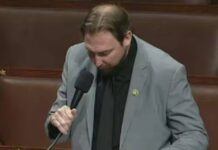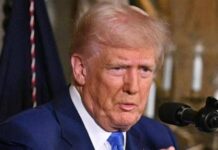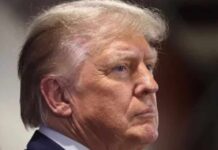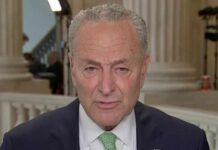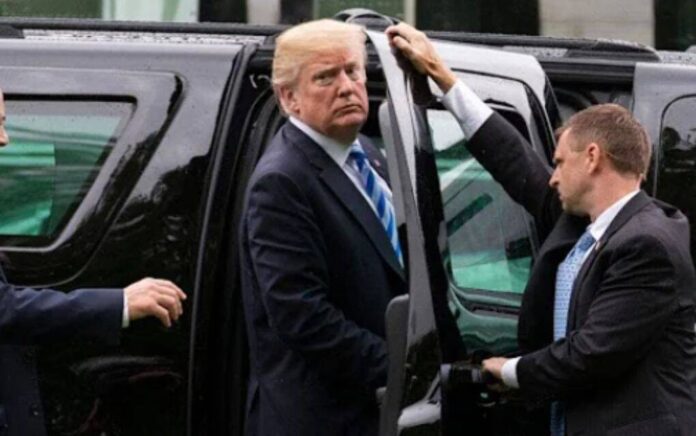
This is the day Americans have been waiting for. A reckoning has arrived.
That’s why Washington, D.C. is panicking about these secret meetings Trump just held.
Trump’s DOGE Arm Asks NIH To Substantiate Why It Deserves Taxpayer Dollars In Secret Meetings
The Department of Government Efficiency (DOGE) recently held extensive meetings with employees from the National Institutes of Health (NIH), focusing on potential further reductions to the institute’s funding and staff. The discussions, which began on Sunday and continued into Monday, were part of ongoing efforts to explore cost-saving measures, according to a source familiar with the situation.
In a related move, the Department of Health and Human Services (HHS) has terminated probationary employees at several health agencies in recent days. These employees, who had not yet completed their one- to three-year probation period, were let go, although individuals in critical roles were exempt. Despite these layoffs and voluntary buyouts, the number of full-time employees at HHS agencies still exceeds pre-pandemic levels. For example, the Food and Drug Administration (FDA) employs 1,979 more full-time staff, the NIH has 1,312 more, and the Centers for Disease Control and Prevention (CDC) has 1,224 more compared to the years before the 2020 pandemic, as confirmed by HHS Communications Director Andrew Nixon.
The significant cuts are a part of the ongoing effort led by tech entrepreneur Elon Musk, who spearheads DOGE, to reduce federal spending across various government agencies. NIH funding has traditionally enjoyed bipartisan support on Capitol Hill, bolstered by influential stakeholders such as universities that benefit from NIH grants and the pharmaceutical industry, which relies on NIH-backed research.
However, the 2020 pandemic brought renewed scrutiny to NIH’s involvement in high-risk gain-of-function research, which enhances pathogens’ ability to cause harm or spread. Investigations have revealed lapses in regulatory oversight at the NIH, particularly regarding the export of coronavirus research to the Wuhan Institute of Virology, raising questions about the research’s potential link to the pandemic. Musk has publicly criticized EcoHealth Alliance, an NIH contractor involved in the research, for its role in these studies.
Despite the ongoing controversy, NIH’s budget has continued to grow. It rose from $39 billion in 2019 to a projected $50 billion in 2025, even after accounting for inflation. In addition to the potential staffing cuts at NIH, the department is also facing internal changes.
Truth Comes Out About 2020 Pandemic Panic And NIH Involvement
Two senior NIH figures, Acting Director Lawrence Tabak and Deputy Director of Extramural Research Michael Lauer, recently announced their retirements. Tabak, 73, was instrumental in internal discussions regarding NIH’s connection to the Wuhan Institute of Virology, particularly when managing the public narrative around the lab-leak theory. In February 2020, Tabak participated in a teleconference alongside other NIH leaders, including Director Francis Collins and NIAID Director Anthony Fauci, to strategize how to downplay the lab-leak theory in the media. Emails obtained through congressional investigations show that these discussions were central to NIH’s efforts to control the narrative surrounding the origins of the virus.
Both Tabak and Lauer were key figures in the NIH’s investigations into EcoHealth Alliance and the Wuhan Institute of Virology. Lauer led a stalled investigation into EcoHealth, which had received funding from the NIH’s National Institute of Allergy and Infectious Diseases (NIAID) for research at the Wuhan lab. Despite significant challenges in obtaining crucial data from EcoHealth, including missing lab notebooks, the NIH ultimately reinstated EcoHealth’s NIAID grant in April 2023. Congressional investigators have since uncovered concerns about EcoHealth’s lack of cooperation with the investigation and its failure to provide critical information.
“Yes, I have seen that,” Lauer has said, referring to the lack of cooperation from NIAID in congressional overview. “I’ve seen that in scientific misconduct investigations, where laboratory notebooks or other original files are requested and the parties concerned will state that they lost them, they don’t have them.”
In January 2025, the Department of Health and Human Services (HHS) took the significant step of debaring EcoHealth Alliance, following its failure to meet regulatory requirements. HHS officials noted that EcoHealth’s recognition of the seriousness of these issues only came after debarment proceedings were initiated in May 2024, despite multiple written warnings from NIH over several years.
Amid these administrative changes, the NIH has also enacted cuts to the “indirects” — the portion of NIH grants allocated for overhead costs at research institutions. Some lawmakers, both Democrat and Republican, have expressed concerns that capping indirects at 15 percent could negatively impact hiring and firing practices at research institutions. Independent government watchdogs, including the Government Accountability Office, have frequently raised alarms about inadequate oversight of these funds.
From 1998 to 2003, NIH funding roughly doubled, with a significant portion dedicated to biodefense research, particularly following the 9/11 anthrax attacks. In fact, biodefense funding exceeded that of research for other diseases, including breast cancer, lung cancer, and stroke. However, since that time, there has been no comprehensive evaluation of whether the number of high-security labs in the U.S. is adequate or whether the risks associated with certain biodefense research are justified, according to the GAO.
Some scientists now argue that certain biodefense research could be perceived as bioweapons development by adversarial nations. Despite the ongoing concerns surrounding biodefense and gain-of-function research, the U.S. has yet to fully assess the long-term risks and benefits of these high-stakes research programs.
As the NIH continues to navigate budgetary and staffing challenges, the agency’s future will likely depend on a delicate balancing act between scientific progress, public trust, and regulatory oversight. With the changes in leadership and ongoing scrutiny over past research decisions, the NIH faces an uncertain road ahead.
You can stay updated on any reports from the Department of Government Efficiency here on The Federalist Wire.



